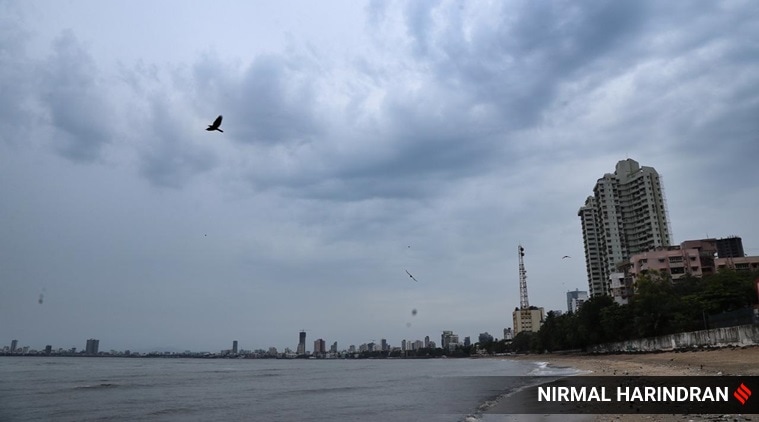 A combination of Covid-19 and cyclones was a double blow as most of the poor in Mumbai lived in slums, which are, sometimes, also low-lying areas with poor drainage and sanitation facilities. (Express File Photo by Nirmal Harindran)
A combination of Covid-19 and cyclones was a double blow as most of the poor in Mumbai lived in slums, which are, sometimes, also low-lying areas with poor drainage and sanitation facilities. (Express File Photo by Nirmal Harindran)
THE COMBINATION of the Covid-19 pandemic and the cyclone could be dangerous, especially for people living in coastal areas, and special provisions should be made for them if the cyclone was as severe as predicted, said Dr Anjal Prakash, research director and adjunct associate professor, Bharti Institute of Public Policy, Indian School of Business, Hyderabad.
The India Meteorological Department (IMD) has said the weather system in the Arabian Sea will intensify into a tropical cyclone called ‘Nisarga’, which will affect the west coast of India. Some of the areas that could be affected are South Gujarat and North Konkan, including Mumbai.
These cyclones, according to scientists from Intergovernmental Panel on Climate Change (IPCC), are due to ocean heatwaves and warming up of oceans.
“I am sincerely hopeful that officials have learnt a lesson from the 2005 deluge and taken care of recommendations of Madhav Chitale Committee, set up by the state government. The committee reiterated the reasons of the flooding, which were known earlier, such as inadequate drainage system, rapid development and loss of ponds that held water, encroachment on and over existing drainage systems and reduction in the coastal mangrove areas. These are adaptation measures that Mumbai must focus on,” Dr Prakash said.
He also said River Mithi, the major drainage point in the North, had been reduced to an open drain due to severe encroachment and discharge of industrial effluents. Cyclonic occurrences were becoming “the new normal” and, therefore, unprecedented measures were needed in these increasingly uncertain times, he added.
He said Covid-19 and cyclones was a double blow as most of the poor in Mumbai lived in slums, which are, sometimes, also low-lying areas with poor drainage and sanitation facilities.
The recent special report by the IPCC on ‘Ocean and cryosphere in a changing climate’ made important revelations about the changing characteristics of the seas. The impact of warming up of ocean means that there will be an increase in incidences of tropical cyclone winds and rainfall, and increases in extreme waves, combined with relative sea-level rise, exacerbated extreme sea level events and coastal hazards. One of the most affected cities, according to reports, is Mumbai.